Imagine an area in the Pacific Ocean twice the size of Texas with millions of tons of plastic waste. This is the staggering reality of the Great Pacific Garbage Patch, one of the most pressing environmental crises of our time. This isn’t just one giant piece of trash either; this vast expanse consists of countless microplastics and larger debris, swirling in the ocean’s gyres, slowly breaking down and releasing toxic chemicals all the while.
The Great Pacific Garbage Patch is not just an eyesore; it’s a powerful symbol of humanity’s unsustainable relationship with plastic. It represents the devastating impact of our throwaway culture, contributing not only to the degradation of ocean ecosystems but also to the accelerating pace of climate change.
In this blog, we will outline the issue of the Great Pacific Garbage Patch, explore its global impacts on the environment and human health, and discuss what actions are being taken – and what more needs to be done – to address this monumental problem.
Understanding the Great Pacific Garbage Patch
The Great Pacific Garbage Patch is not just one solid island of trash, but rather a concentrated area of debris in the Pacific Ocean. Located between Hawaii and California, this environmental catastrophe is divided into two main areas: the Western Garbage Patch, closer to Japan, and the Eastern Garbage Patch, which lies between the U.S. West Coast and Hawaii. These patches are formed by oceanic gyres – large systems of rotating ocean currents – that act like whirlpools, trapping floating debris within their vortexes.
Despite the vast amounts of trash caught in these gyres, the Great Pacific Garbage Patch is not immediately visible to the naked eye. Much of the waste consists of microplastics – tiny fragments of plastic less than 5 millimeters long – that are suspended below the surface of the water. This means you could sail through the patch without realizing you’re surrounded by millions of pieces of plastic, some of which have been breaking down for decades.
The exact size of the Great Pacific Garbage Patch is difficult to determine due to the constantly shifting nature of the currents and the fact that a lot of the debris is dispersed throughout the water column. However, estimates suggest it covers an area of approximately 1.6 million square kilometers – an area larger than Texas or three times the size of France. It’s believed to contain around 1.8 trillion pieces of plastic, weighing an estimated 80,000 tons. While the majority of this waste originates from land-based sources in North America and Asia, a significant portion also comes from abandoned fishing gear and other debris discarded by ships.
Understanding the scale and composition of the Great Pacific Garbage Patch is crucial in grasping the severity of the problem. It’s so much more than just “gross”; it’s a seriously complex and far-reaching environmental disaster with severe implications for marine life, ecosystems, and even human health.
Environmental and Health Impacts
The Great Pacific Garbage Patch is more than just an environmental eyesore; it is a growing threat to marine life and, by extension, to human health. The debris trapped in the patch consists largely of plastic that doesn’t biodegrade but instead breaks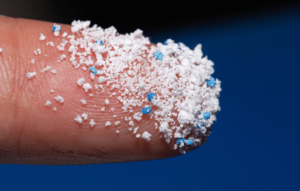 down into smaller and smaller pieces. These microplastics pose a significant risk to marine animals, who often mistake them for food. When ingested, these plastics can cause physical harm, block digestive tracts, and even lead to starvation. Sea turtles, fish, and seabirds for example have all been found with stomachs full of plastic debris, a tragic consequence of the pervasive pollution in our oceans.
down into smaller and smaller pieces. These microplastics pose a significant risk to marine animals, who often mistake them for food. When ingested, these plastics can cause physical harm, block digestive tracts, and even lead to starvation. Sea turtles, fish, and seabirds for example have all been found with stomachs full of plastic debris, a tragic consequence of the pervasive pollution in our oceans.
But the danger doesn’t stop at initial ingestion by a single organism. As plastics break down in the ocean, they release toxic chemicals, including persistent organic pollutants (POPs) that can accumulate in the tissues of marine organisms. These chemicals can disrupt the endocrine systems of marine life, leading to reproductive issues, developmental problems, and even death. To make things worse, these microplastics as well as the chemicals they leach can biomagnify up the food chain, meaning that larger predators, including humans who consume seafood, are at risk of exposure to these toxins.
The problem of microplastics is particularly insidious because these tiny fragments are almost impossible to remove from the ocean. They are ingested by a wide range of marine organisms, from the smallest of plankton to the largest of whales, leading to widespread contamination of marine ecosystems. As these microplastics and their associated chemicals enter the food web, they inevitably end up on human plates. Many studies have detected microplastics in seafood, and while the full impact on human health is still being studied, the potential for harm is significant.
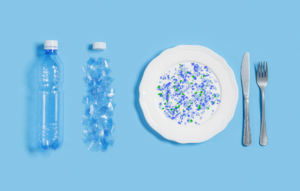
Beyond the immediate impact on marine life and human health, the Great Pacific Garbage Patch also contributes to the broader environmental crisis of climate change. As plastics are exposed to sunlight and heat in the ocean, they release greenhouse gases such as methane and ethylene, accelerating global warming. This inevitably creates a vicious cycle: the warming planet causes plastics to break down more rapidly, releasing more greenhouse gases and further intensifying climate change.
This floating mass of debris is a problem for all of us, affecting the health of marine ecosystems and threatening human health as well.
Current Cleanup and Prevention Efforts
Addressing the challenge posed by the Great Pacific Garbage Patch requires a combination of large-scale cleanup efforts and preventative measures to stop further pollution. Over the past few years, some good progress has been made in both areas, but much work remains to be done.
One of the most notable initiatives is The Ocean Cleanup, an environmental organization dedicated to removing plastic from the oceans. The organization launched its first large-scale cleanup system, known as Jenny (System 002), in August 2021. Over the course of two years, Jenny successfully removed more than 623,439 pounds of trash from the Great Pacific Garbage Patch. Building on this success, The Ocean Cleanup introduced System 03 in late August 2023, a more advanced and efficient system designed to scale up the cleanup efforts. While these initiatives represent a significant step forward, the sheer size and complexity of the garbage patch mean that cleanup efforts alone are not enough to solve the problem.
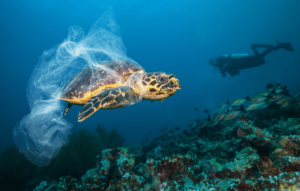
Prevention is equally crucial, and this is where international cooperation and regulatory measures come into play. Organizations like the World Wildlife Fund (WWF) and Ocean Conservancy are working with governments and industries to develop and implement policies aimed at reducing plastic waste. This includes advocating for standardized regulations on the production and use of plastics, particularly single-use plastics, which are a major contributor to ocean pollution. There is also a growing push for companies to take responsibility for the entire lifecycle of their products, from production to disposal, to ensure that fewer plastics end up in the ocean.
In addition to large-scale efforts, smaller, community-driven initiatives are playing a vital role in preventing further pollution. Beach cleanups, educational campaigns, and local policy changes are helping to reduce the amount of plastic waste that makes its way into our waterways and, ultimately, into the ocean. These grassroots efforts not only help to remove trash from the environment but also raise awareness about the importance of reducing plastic use and properly disposing of waste.
The challenge of cleaning up and preventing further pollution in the Great Pacific Garbage Patch is immense and will require sustained global effort. Governments, industries, and individuals all have a role to play in addressing this crisis. While current efforts are making a difference, a broader and more coordinated approach is necessary to tackle the root causes of ocean plastic pollution and to protect our oceans for future generations.
How You Can Make a Difference
While large-scale cleanup efforts and regulatory measures are certainly crucial, individual actions can also play a key role in addressing the problem of the Great Pacific Garbage Patch. Each of us can contribute to the solution by making conscious choices in our daily lives that reduce plastic waste and protect the environment.
One of the simplest and most effective ways to reduce your plastic footprint is to minimize the use of single-use plastics. Items like plastic bottles, straws, and bags are among the most common debris found in the ocean. By opting for reusable alternatives – such as stainless steel water bottles, cloth shopping bags, and metal or bamboo straws – you can significantly cut down on the amount of plastic waste you generate. Every small action adds up, and collectively, these changes can have a substantial impact.
In addition to reducing plastic use, proper disposal of waste is essential. Make sure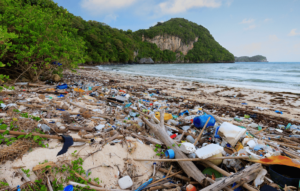 that your trash is securely contained and that recyclables are properly sorted and placed in designs. Participating in local recycling programs can help keep plastics out of the ocean and give them a second life as new products. If you live near a coastline, consider joining or organizing beach cleanups to remove debris before it washes into the ocean. Even if you’re inland, cleaning up local parks, neighborhoods, and waterways can prevent trash from traveling downstream and eventually reaching the sea.
that your trash is securely contained and that recyclables are properly sorted and placed in designs. Participating in local recycling programs can help keep plastics out of the ocean and give them a second life as new products. If you live near a coastline, consider joining or organizing beach cleanups to remove debris before it washes into the ocean. Even if you’re inland, cleaning up local parks, neighborhoods, and waterways can prevent trash from traveling downstream and eventually reaching the sea.
Supporting organizations that are dedicated to ocean cleanup and environmental protection is another powerful way to make a difference. Donations to groups like The Ocean Cleanup, Ocean Conservancy, and WWF help fund critical initiatives and research that aim to tackle the problem at its source. Additionally, many companies are now offering products made from recycled ocean plastics or are committed to reducing their plastic footprint. By choosing to buy from these companies, you’re supporting sustainable practices and encouraging more businesses to follow suit.
Finally, advocacy is a huge component of individual action. Voting for leaders who prioritize environmental policies, participating in community meetings, and writing to your local representatives about the importance of addressing plastic pollution are all ways to drive systemic change. Public pressure can lead to stronger regulations, more funding for cleanup efforts, and greater corporate responsibility.
While the scale of the Great Pacific Garbage Patch can seem overwhelming, it’s important to remember that every individual action counts. By making informed choices, supporting effective initiatives, and advocating for change, you can contribute to the global effort to protect our oceans and ensure a healthier planet for future generations.
Closing Thoughts
The Great Pacific Garbage Patch stands as a sobering example of the environmental challenges we face in the modern world. It is a tangible manifestation of our overreliance on plastics and our failure to manage waste responsibly. While the situation is dire, it also presents an opportunity for change. The efforts of organizations like The Ocean Cleanup and advocacy by environmental groups highlight the possibility of turning the tide on ocean pollution.
The responsibility doesn’t rest solely on these organizations though. The magnitude of this issue calls for a collective response – governments, industries, and individuals 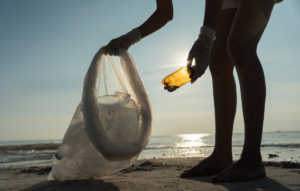 all have crucial roles to play. By adopting sustainable practices, supporting innovative cleanup technologies, and advocating for stronger environmental policies, we can mitigate the impact of the Great Pacific Garbage Patch and prevent future pollution.
all have crucial roles to play. By adopting sustainable practices, supporting innovative cleanup technologies, and advocating for stronger environmental policies, we can mitigate the impact of the Great Pacific Garbage Patch and prevent future pollution.
As we confront this mammoth challenge, we must remember that our actions today will shape the health of our oceans and our planet for generations to come. The solutions are within our reach, but they require commitment and collaboration at every level of society. The staggering reality of the Great Pacific Garbage Patch should not just alarm us; it should also inspire us to act.
So let’s go.








